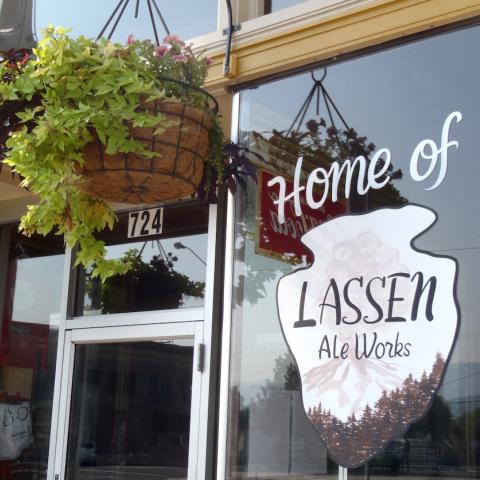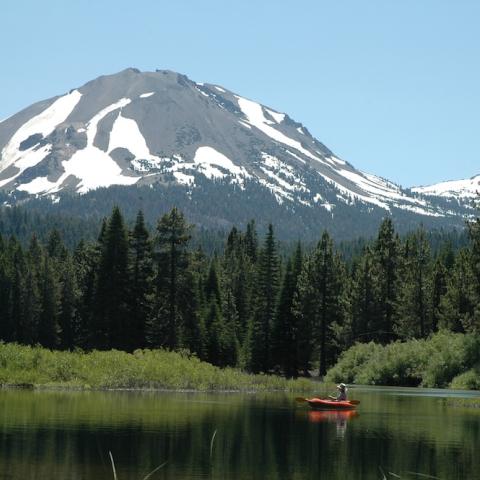
Seven cabins in the Juniper Lake area of Lassen Volcanic National Park have been destroyed by the Dixie Fire/NPS
Seven of eight cabins located in Lassen Volcanic National Park on the northwest shore of Juniper Lake, a beautiful, high mountain lake with views of Lassen Peak and other surrounding peaks, have been destroyed in the Dixie Fire.
Most of the destroyed structures are private, inholder cabins, privately owned before the park’s founding, a park release said Sunday. Only one of the cabins remains unscathed by the fire, which has burned more than 721,000 acres in northern California, including at least 46,950 acres inside the park.
One of the seven cabins destroyed by the fire is owned by the federal government.
“The character of Juniper Lake is somewhat unique,” said Lassen Volcanic Superintendent Jim Richardson. “These cabins were privately owned before that part of the park became a federal park. They have been passed down through families and are very important to the history of those families.”
Richardson described the Juniper Lake Campground, located near the impacted cabins, as “old school.” It is first-come, first-serve, where there are two group campsites and several individual sites.
“It is more of a local’s campground and off-the-beaten-path,” the superintendent said. “The campground was burned, but that doesn’t mean it’s gone. We haven’t been on the ground to evaluate it yet. The resources needed to do so have a higher priority of suppressing this fire.”
The Dixie Fire, which has burned a total of 721,298 acres, tore through this part of the park, destroying the historic Harkness Lookout station along the way. It then went along the east side of Juniper Lake, but it did not burn the Juniper Lake Ranger Station. Richardson credits fuel clearing for sparing the station.
The fire then continued along the east shore and headed north to Snag Lake and almost to Butte Lake as part of a two-day wind event that began on August 10th. The cabin owned by the National Park Service accommodated crews that worked in that area of the park.




 Support Essential Coverage of Essential Places
Support Essential Coverage of Essential Places







Comments
Can the private inholders rebuild their cabins or are they out?
If the cabins were rec residences on a National Forest and they burned down most likely they would not be allowed to rebuild, but not sure about NPS policy.
I know someone who owns one of them. Maybe hers was the one to make it through? Sad, all the way around.
Not sure what the deal would be with the cabins. The reporting (including here) is that they're private inholdings inside of Lassen Volcanic National Park, so they wouldn't be subject to Forest Service control like similar cabins outside the buildings are privately owned but require a periodic permit on Forest Service land. While NPS does generally provide some services (like utilities and fire/police protection) to inholdings, they aren't typically subject to NPS regulation. I remember during the several federal government shutdowns, Furnace Creek at Death Valley stayed open because it was privately owned, and because the primary road through the park was a state highway.
I would think that it would be more like private, unincorporated land outside of the park that's subject to county building permits. But if the county could provide a permit, NPS would typically be required to give access to rebuild.
Did Rainbow Lake burn? That lake is my solace in this world.
As a teen, I stayed in one of the cabins with the Browning family on Juniper Lake during summer vacation - 1952 to 1955. It was heaven. We had the lake mostly to ourselves with a few fishermen on weekends. I learned to sail, row, fish, sing, hike, relax and grow next to those cold, clear, blue waters. We were steps away from the lake, under sugar pines and fir trees, with deer, bear, chipmonks (goldmantle ground squirrels), bluejays and an occasional snake sharing the space. This was before earthquakes closed the springs that fed the lake and killed off the trout we caught for dinner. To think it is gone is heartbreaking. It will live in my head, heart and soul as long as I live.